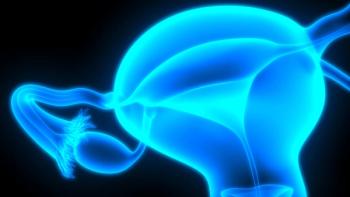
- ONCOLOGY Vol 12 No 3
- Volume 12
- Issue 3
Initial Control of Chemotherapy-Induced Nausea and Vomiting in Patient Quality of Life
The side effects commonly experienced by patients receiving chemotherapy for the treatment of cancer can challenge many aspects of daily life. Nausea and vomiting, the most common side effects reported by patients, affect the ability to continue with usual life activities and, thus have a pronounced impact on quality of life.
ABSTRACT: The side effects commonly experienced by patients receiving chemotherapy for the treatment of cancer can challenge many aspects of daily life. Nausea and vomiting, the most common side effects reported by patients, affect the ability to continue with usual life activities and, thus have a pronounced impact on quality of life. This paper reviews studies of the impact of nausea and emesis on quality of life, and highlights the importance of prevention of these side effects by presenting new data on how persistent uncontrolled nausea and vomiting can be. The Morrow Assessment of Nausea and Emesis (MANE) was used to collect information on symptoms experienced by consecutive patients starting chemotherapy between September 1987 and December 1995 at any of 18 geographically diverse member sites of the University of Rochester Cancer Center Community Clinical Oncology Program. Data from 1,413 patients were collected after each of four successive chemotherapy treatments. Reported incidences of posttreatment nausea and posttreatment vomiting after the first treatment were 59.4% and 28.6%, respectively. Occurrence of nausea/vomiting at the first treatment was a strong predictor of nausea/vomiting at later treatments. Of the 839 patients reporting initial nausea, 763 (90.9%) reported nausea at at least one subsequent treatment, and approximately 59% reported nausea after all three subsequent treatments. Fewer than half (45.6%) of the patients who had no nausea at the first treatment developed it later. The majority (72.0%) of patients reporting vomiting at the first treatment also reported subsequent vomiting, 30.7% of whom experienced emesis at all remaining treatments. Conversely, 76.2% of patients who were emesis-free at the first treatment remained so for all later treatments. These findings show a continuing need for further progress in controlling nausea and vomiting, and demonstrate the importance of aggressive nausea/vomiting control at the first treatment. In addition, more emphasis on controlling chemotherapy-induced nausea after its initial occurrence is necessary. [ONCOLOGY(Suppl 4):32-37, 1998]
Patients invariably rank nausea and vomiting as among the most distressing adverse effects of chemotherapy.[1-3] Furthermore, in a recent survey of 621 oncology nurses, nausea and vomiting, along with tiredness, were judged to be the chemotherapy side effects with the greatest negative impact on quality of life (QOL).[4] In another study, nausea and vomiting were each found to be important predictors of patient distress from chemotherapy, difficulty with chemotherapy, disruption of social life, and disruption of work.[5] Chemotherapy-related nausea and vomiting are highly prevalent. Despite the advances brought about by widespread use of the new 5-HT3 antiemetic agents ondansetron (Zofran), granisetron (Kytril), and tropisetron (Navoban), more than 75% of patients develop nausea following chemotherapy and approximately 40% report emesis.[6]
Aside from being distressing in and of themselves, chemotherapy-related nausea and vomiting (NV) are often associated with physiologic complications such as fatigue, muscle strain, esophageal tears, and metabolic imbalance.[7] They can also contribute to inadequate caloric and fluid intake, which, in turn, can aggravate the cachexia, lethargy, fatigue, and weakness often caused by cancer itself.[8] Increased anxiety and depression have also been associated with NV,[9-11] as has lowered cognitive functioning (which may be due to the use of prochlorperazine).[8] In addition, as a result of frequent or severe postchemotherapy NV, many patients develop what are believed to be conditioned responses to the treatment, including not only the well documented anticipatory NV, which occurs prior to treatment, but also food aversions and aversions to other oncology treatment-related stimuli, such as needles, nurses, and clinic waiting rooms. Finally, poorly controlled NV can lead to dosage reduction or even termination of potentially curative chemotherapy treatment regimens.[2,12,13]
An individuals ability to function normally can be severely compromised by NV.[8,14,15] Recent guidelines adopted by the American Society of Clinical Oncology (ASCO) stress quality of life (QOL) as an important outcome of treatment. The guidelines define QOL as being multidimensional in scope and recognize the importance of using instruments that include not only a global measurement of QOL but also unidimensional outcomes for physical, psychological and social components.[16]
Osoba and colleagues[17] assessed health-related QOL in 433 cancer patients before and after moderately or highly emetogenic chemotherapy using the Functional Living Index-Cancer (FLIC) and its adapted measure for studying the effects of emesis, the Functional Living Index-Emesis (FLIE). Quality of life was measured before treatment began and again 1 week later. Patients who reported one or more episodes of vomiting (N = 230) had significantly greater decreases in global QOL and cognitive function, and worsening of fatigue, anorexia, insomnia, and dyspnea compared with patients who did not vomit (N = 203; all P values < .05). No significant differences were seen in physical, role, emotional, or social function scores between groups. Interestingly, pretreatment values on the measures of physical, role, social function, anorexia, fatigue, and global QOL scores were all predictive of later vomiting. It appeared that patients with more positive values in these areas prior to treatment were less susceptible to the emetogenic properties of the chemotherapeutic agents.
Despite the many published studies examining the efficacy of 5-HT3 antiemetics, we could find only three in which QOL measures were included. Nukariya and colleagues[18] employed a newly developed QOL questionnaire[19] as part of their trial examining the efficacy of tropisetron in reducing delayed NV after chemotherapy with cisplatin (Platinol). All patients were given oral tropisetron on the day of treatment and then were randomly assigned to receive either tropisetron or placebo on days 2 through 5. Patients with no postchemotherapy NV had significantly higher QOL scores than did patients with these symptoms. An additional subset analysis of only those patients who experienced NV on day 1 (within 24 hours of treatment) showed higher QOL scores for those randomized to tropisetron than for those given placebo.
Clavel and colleagues reported on QOL in two parallel arm trials of patients with breast cancer receiving CMF (cyclophosphamide/methotrexate/5-fluorouracil), FAC (5-fluorouracil/Adriamycin/cyclophosphamide) or FEC (5-fluorouracil/epirubicin/cyclophosphamide) comparing the efficacy of ondansetron with that of conventional antiemetics.[20,21] The first trial compared 93 patients receiving 8 mg of ondansetron IV plus 16 mg of dexamethasone IV before chemotherapy followed by 8 mg of ondansetron orally three times daily for 5 days to 90 patients receiving 60 mg of metoclopramide IV plus 16 mg of dexamethasone IV before chemotherapy followed by 20 mg of metoclopramide orally 3 times daily for 5 days. The second trial compared 123 patients receiving 8 mg of ondansetron orally before chemotherapy followed by 8 mg orally twice daily for 3 to 5 days to 131 patients receiving 150 mg of alizapride IV before chemotherapy followed by 50 mg orally twice daily for 3 to 5 days. In each study, the increased emetic control found in the ondansetron arm was paralleled by higher patient QOL scores measured 3 days after treatment.
Nausea and vomiting that develop during or after chemotherapy are generally assumed to be caused by the pharmacologic action of chemotherapy agents. While the emetic potential of chemotherapy agents undoubtedly is the largest contributing factor in the development of NV, it is not the only factor. Nausea and vomiting are also believed to develop in patients as the result of a conditioned or learned response to chemotherapy. These conditioned responses can occur not only prior to treatment as anticipatory nausea and vomiting (ANV) but also are thought to contribute to postchemotherapy NV, for which the conditioned symptoms cannot be distinguished clinically from those due to the pharmacologic effects of the drugs.[22-25] In support of the view that conditioning plays a role in the development of postchemotherapy NV is the rather curious fact that the symptoms generally increase as the number of chemotherapy treatments increases.[26] This finding runs counter to the usual physiologic response pattern in which repeated stimulation generally leads over time to a decreased response. The incidence of ANV also increases as the number of chemotherapy cycles increases.[27] Approximately one in three patients experiences ANV by the fourth treatment cycle.[28]
Popescu and Cunningham[26] noted that standard combinations of metoclopramide, corticosteroid and diphenhydramine were prone to lose their antiemetic efficacy over repeated treatment cycles of highly or moderately emetogenic chemotherapy. They suggested that a partial explanation for this phenomenon lies in a conditioning effect generated by incomplete control of postchemotherapy NV during the early treatments.[26]
If it is true that occurrence of postchemotherapy NV early in the course of chemotherapy treatment intensifies postchemotherapy NV at later treatments and also leads to the development of anticipatory nausea and vomiting, as suggested by the conditioning theory, then complete control of these symptoms at the time of the first chemotherapy treatment assumes critical importance.
Methods
We examined the relationship between control of postchemotherapy nausea and vomiting following the first treatment and development of postchemotherapy and anticipatory NV at subsequent treatments in a large recently concluded multicenter study. Data from 1,413 consecutive patients starting chemotherapy between September 1987 and December 1995 at any of 18 geographically diverse member sites of the University of Rochester Cancer Center Community Clinical Oncology Program (URCC CCOP) Research Base were collected following four successive chemotherapy treatments. Two cancer diagnoses predominated among study subjects; nearly 60% of subjects had breast cancer and 18% had hematologic malignancies. The group as a whole was well educated; nearly half of the patients had had some college education and close to 88% had completed high school. More than four out of five patients were female. Other treatment and demographic variables are shown in
The Morrow Assessment of Nausea and Emesis (MANE) was used to collect information on symptoms experienced by the patients. The MANE is a patient self-report questionnaire used to assess the occurrence, duration, and severity of postchemotherapy and anticipatory nausea and emesis. Patients in this study were given the questionnaire to complete at home over a 4-day period beginning with the day of chemotherapy following each on-study chemotherapy treatment. It has been used in two previous URCC CCOP protocols and in several dozen other studies over the past decade. Psychometric validity and reliability have been established.[29,30] The following section describes the findings from repeated administrations of the MANE to the study population.
Results
Following the first chemotherapy treatment, 839 (59.4%) of the 1,413 patients developed nausea and 404 (28.6%) reported vomiting. Occurrence of NV following the first treatment was a strong predictor of NV at later treatments. Of the 839 patients reporting nausea after the first treatment, 763 (90.9%) reported nausea following at least one later treatment, with 676 (80.6%), 625 (74.5%), and 604 (72.0%) reporting the symptom after the second, third, and fourth treatments, respectively (
Anticipatory nausea (AN) at later treatments was also significantly related to postchemotherapy nausea after the first treatment; 340 (40.5%) of the 839 patients reporting nausea after the first treatment also reported at least one incidence of AN. Anticipatory nausea was reported by 184 patients (21.9%) prior to the second chemotherapy cycle, 191 (22.8%) before the third treatment, and 195 (23.2%) before the fourth cycle. Only 14.3% of the patients who did not report nausea after the first treatment reported AN at a later treatment. The respective rates for the second, third, and fourth treatments were all less than 7%.
The relationship between vomiting after the first treatment and vomiting after subsequent treatments largely mirrorred that between early and later nausea described above (
Anticipatory vomiting (AV) at later treatments was also related to vomiting after the first treatment, with 54 (13.4%) of the 404 patients reporting vomiting after the first treatment also reporting at least one incidence of AV. Reported incidence rates of AV were 8.2%, 6.4%, and 5.4% prior to the second, third, and fourth treatments, respectively. Only 4.6% of the patients who did not report vomiting after the first treatment reported AV at a later treatment, the respective rates being 1.2%, 1.9%, and 2.3% for the second, third, and fourth treatments.
Patients and health professionals agree that chemotherapy-related nausea and emesis are among the most distressing adverse effects of chemotherapy treatment for cancer, contributing significantly to several aspects of lowered quality of life during that stressful period and often exacerbating negative physiologic and psychologic effects caused by the disease itself. Despite the introduction of the new class of 5HT3 antiemetics, nausea and emesis have remained prevalent. Descriptive analysis of data from a recently completed large multi-center study, described herein, reveals that approximately 75% of patients developed nausea and over half that number experienced vomiting during the course of four cycles of chemotherapy. In particular, the occurrence of nausea or emesis following the first chemotherapy treatment predicted their occurrence in subsequent cycles and also was associated with the development of conditioned or learned anticipatory and postchemotherapy nausea and emesis.
These findings emphasize a continuing need for further progress in NV control, particularly nausea control, and demonstrate the importance of aggressive antiemetic treatment aimed at complete prevention of both nausea and vomiting at the first chemotherapy treatment.
Recent reports also suggest that more aggressive early NV control may be cost-effective. A cost-effectiveness analysis of initial and salvage use of 5-HT3 antiemetics based on studies published in the medical literature indicated that initial treatment with these drugs is cost-effective. Furthermore, starting antiemetic therapy with a combination of ondansetron plus dexamethasone saved more money than starting with ondansetron alone.[31] Other analyses have also shown that in Europe, 5-HT3 antiemetics are cost-effective when used to prevent acute nausea and vomiting.[32]
References:
1. Coates A, Abraham S, Kaye SB, et al: On the receiving endpatient perception of the side-effects of cancer chemotherapy. Eur J Cancer Clin Oncol 19:203-208, 1983.
2. Cooper S, Georgiou V: The impact of cytotoxic chemotherapyperspectives from patients, specialists and nurses. Eur J Cancer 28A(suppl 1):536-538, 1992.
3. Griffin AM, Butow PN, Coates AS, et al: On the receiving end. V: Patient perceptions of the side effects of cancer chemotherapy in 1993. Ann Oncol 7:189-195, 1996.
4. Lindley CM, Hirsch JD: Oncology nurses attitudes, perceptions, and knowledge of quality-of-life assessment in patients with cancer. Oncol Nurs Forum 21:103-108, 1994.
5. Love RR, Leventhal H, Easterling DV, et al: Side effects and emotional distress during cancer chemotherapy. Cancer 63:604-612, 1989.
6. Roscoe JA, Morrow GR, Bennett JM, et al: Updates from a 7-year monitoring study of chemotherapy induced anticipatory and posttreatment nausea and vomiting. University of Rochester Cancer Center Second Annual Scientific Symposium, p 50, 1997.
7. Bilgrami S, Fallon BG: Chemotherapy-induced nausea and vomiting. Easing patients fear and discomfort with effective antiemetic regimens. Postgrad Med 94:55-58, 1993.
8. Osoba D, Zee B, Warr D, et al: Effect of postchemotherapy nausea and vomiting on health-related quality of life(HRQOL). Presented at the Supportive Care in Cancer, 9th International Symposium, Perugia, Italy, 1997.
9. Andrykowski MA, Redd WH, Hatfield AK: Development of anticipatory nausea: A prospective analysis. J Consult Clin Psychol 53:447-454, 1985.
10. Carey MP, Burish TG: Anxiety as a predictor of behavioral therapy outcome for cancer chemotherapy patients. J Consult Clin Psychol 53:860-865, 1985.
11. Morrow GR, Dobkin PL: Anticipatory nausea and vomiting in cancer patients undergoing chemotherapy treatment: Prevalence, etiology, and behavioral interventions. Clin Psychol Rev 8:517-556, 1988.
12. Hoagland AC, Morrow,GR, Bennett JM, et al: Oncologists views of cancer patient noncompliance. Am J Clin Oncol 6:239-244, 1983.
13. Holland J: Psychological aspects of oncology. Med Clin North Am 61:737-748, 1977.
14. Lindley CM, Hirsch JD, ONeill CV, et al: Quality of life consequences of chemotherapy-induced emesis. Qual Life Res 1:331-340, 1992.
15. Martin CG, Mathias SD, Elting LS, et al: Psychometric properties of quality of life instruments for nausea and vomiting (abstract). Proc Am Soc Clin Oncol 15:532, 1996.
16. Anonymous: Outcomes of cancer treatment for technology assessment and cancer treatment guidelines. American Society of Clinical Oncology: J Clin Oncol 14:671-679, 1996.
17. Osoba D, Zee B, Warr D, et al: Quality of life studies in chemotherapy-induced emesis. Oncology 53(suppl 1):92-95, 1996.
18. Nukariya N, Kobayashi K, Ishihara Y, et al: Effects of an anti-emetic tropisetron capsule on QOL of patients with delayed nausea and vomiting induced by cancer chemotherapy. Gan To Kagaku Ryoho 23:757-771, 1996.
19. Ishihara Y, Nukariya N, Kobayashi K, et al: The development of a new QOL questionnaire on chemotherapy-induced emesis and vomitinginvestigation of reliability and validity. Gan To Kagaku Ryoho 23:745-755, 1996.
20. Clavel M, Soukop M, Greenstreet YL: Improved control of emesis and quality of life with ondansetron in breast cancer. Oncology 50:180-185, 1993.
21. Clavel M, Bonneterre J, dAllens H, et al: Oral ondansetron in the prevention of chemotherapy-induced emesis in breast cancer patients: French Ondansetron Study Group. Eur J Cancer 31A:15-19, 1995.
22. Burish TG, Snyder SL, Jenkins RA: Preparing patients for cancer chemotherapy: Effect of coping preparation and relaxation interventions. J Consult Clin Psychol 59:518-525, 1991.
23.Burish TG, Tope DM: Psychological techniques for controlling the adverse side effects of cancer chemotherapy: Findings from a decade of research. J Pain Symptom Manage 7:287-301, 1992.
24. Morrow GR: Chemotherapy-related nausea and vomiting: Etiology and management. CA Cancer J Clin 39:89-104, 1989.
25. Morrow GR, Lindke J, Black PM: Predicting development of anticipatory nausea in cancer patients: prospective examination of eight clinical characteristics. J Pain Symptom Manage 6:215-223, 1991.
26. Popescu RA, Cunningham D: Prevention of nausea and vomiting in repeat courses, in Dicato M (ed): Medical Management of Cancer Treatment Induced Emesis, pp 131-148. London, Martin Dunitz, 1997.
27. Alba E, Bastus R, de Andres L, et al: Anticipatory nausea and vomiting: Prevalence and predictors in chemotherapy patients: Oncology 46:26-30, 1989.
28. Morrow GR, Roscoe JA: Anticipatory nausea and vomiting: Models, mechanisms and management, in Dicato M (ed): Medical Management of Cancer Treatment Induced Emesis, pp 149-166. London, Martin Dunitz , 1997.
29. Carnrike CLM, Brantley PJ, Bruce B, et al: Test-retest reliability and concurrent validity of the Morrow Assessment of Nausea and Emesis (MANE) for the assessment of cancer chemotherapy-related nausea and vomiting. J Psychopathol Behav Assess 10:107-116, 1988.
30. Morrow GR: A patient report measure for the quantification of chemotherapy induced nausea and emesis: Psychometric properties of the Morrow assessment of nausea and emesis (MANE). Br J Cancer 19(suppl):S72-74, 1992.
31. Bleiberg H, Autier P, Michaux D: Cost-effectiveness analysis of antiemetic treatment. Support Care Cancer 2:145-149, 1994.
32. Aapro MS: Costs and benefits of antiemetic therapy. Support Care Cancer 2:304-306, 1994.
Articles in this issue
over 27 years ago
Status of Antiestrogen Breast Cancer Prevention Trialsover 27 years ago
Antiestrogen Therapy: Uncertainties and Risk Assessmentover 27 years ago
Adjuvant Trials of Toremifene vs Tamoxifen: The European Experienceover 27 years ago
Pivotal Trials of Letrozole: A New Aromatase Inhibitorover 27 years ago
SGO Clinical Practice Guidelines: Introductory Remarksover 27 years ago
Scientists Define New Role for Cell Signaling Pathwayover 27 years ago
Coalition Formed to Further Clinical Cancer ResearchNewsletter
Stay up to date on recent advances in the multidisciplinary approach to cancer.

















































































